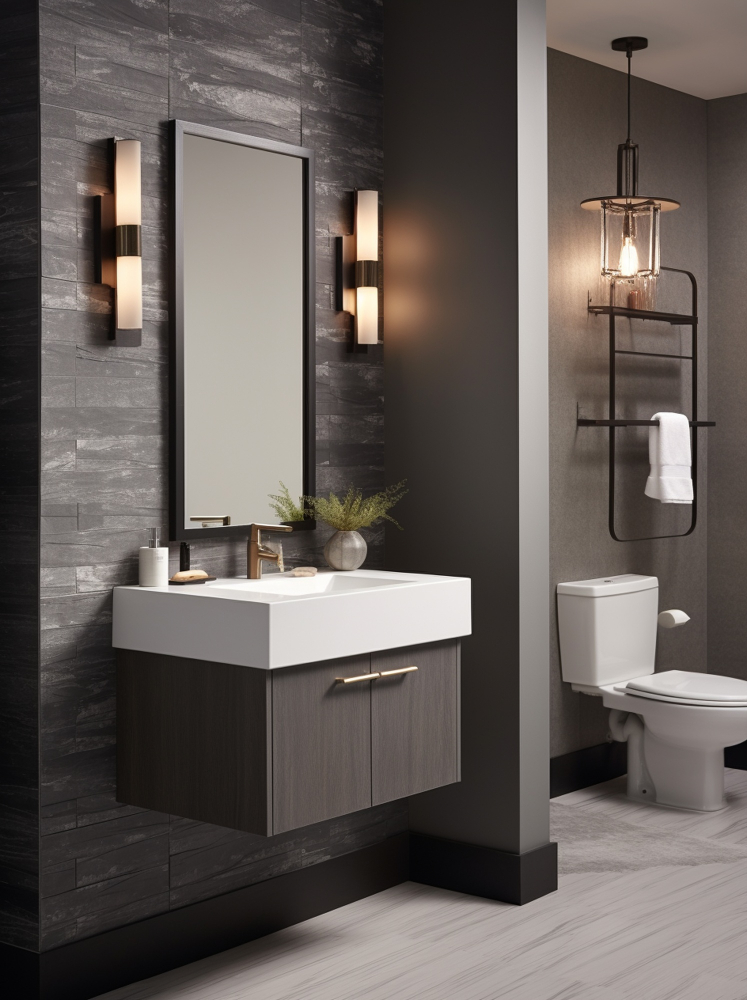 Lighting plays a crucial role in enhancing the aesthetics and functionality of any space. From creating ambiance to improving visibility, the right lighting choices can transform a room. In this blog, we’ll delve into the nuances of lighting, with a particular focus on bathrooms, while also exploring the broader applications of different lighting temperatures and the significance of Color Rendering Index (CRI).
Lighting plays a crucial role in enhancing the aesthetics and functionality of any space. From creating ambiance to improving visibility, the right lighting choices can transform a room. In this blog, we’ll delve into the nuances of lighting, with a particular focus on bathrooms, while also exploring the broader applications of different lighting temperatures and the significance of Color Rendering Index (CRI).
Understanding Kelvin Temperature: One of the key aspects of lighting is the color temperature, measured in Kelvins (K). Kelvin temperature determines the warmth or coolness of light. Here’s a breakdown of common Kelvin temperatures and their suitable applications:
- Warm White (2700K-3000K):
- Best for creating a cozy and inviting atmosphere.
- Ideal for living rooms, bedrooms, and accent lighting.
- Creates a comfortable and relaxing ambiance.
- Neutral White (3500K-4000K):
- Strikes a balance between warm and cool tones.
- Suitable for kitchens, offices, and task lighting.
- Offers a crisp and clear illumination.
- Cool White (5000K-6500K):
- Mimics natural daylight.
- Well-suited for bathrooms, kitchens, and workspaces.
- Enhances visibility and focus.
Choosing the Right Kelvin for Bathrooms: Bathrooms serve various purposes, from relaxation to grooming. For bathrooms, a combination of warm and cool lighting is often recommended:
- Vanity Lighting: Opt for a color temperature between 3000K and 4000K to achieve a flattering balance. This ensures accurate color representation during grooming tasks.
- Ambient Lighting: Consider using a warmer color temperature (around 2700K) for ambient lighting to create a spa-like atmosphere during relaxation.
Color Rendering Index (CRI): CRI measures how accurately a light source renders colors compared to natural light. A higher CRI indicates better color accuracy. In spaces like bathrooms where accurate color representation is crucial, aim for a CRI above 80.
The Shadow Dilemma: Overhead lighting fixtures, when placed exclusively above the vanity, tend to cast shadows on the face. This is particularly problematic during grooming tasks, where precision is key. Shadows can obscure facial features, making it challenging to apply makeup, shave, or carry out other personal care routines effectively.
Reasons Behind Shadows:
- Single-Directional Light Source: Overhead lighting fixtures provide illumination from a single direction. This creates stark shadows, especially when the light is coming from directly above.
- Inadequate Side Lighting: Without additional lighting on the sides of the mirror, the face is left with uneven illumination. Shadows form on one side of the face, impacting visibility and accuracy during grooming.
- Limited Coverage: Overhead lighting may not sufficiently cover the entire vanity area, leaving corners and edges in shadow. This compromises the functionality and aesthetics of the space.
Strategic Sidelighting Solutions: To address the shadow dilemma and achieve balanced illumination in the bathroom, consider incorporating sidelighting in addition to overhead fixtures. Sidelighting involves placing fixtures on each side of the bathroom mirror, at eye level. Here’s why it’s a game-changer:
- Even Illumination: Sidelighting eliminates shadows by providing light from multiple directions, ensuring that the face is evenly illuminated. This is essential for tasks like applying makeup or shaving.
- Reduced Harshness: Combining overhead and sidelighting softens the overall lighting in the space, reducing harsh shadows and creating a more flattering and comfortable environment.
- Enhanced Aesthetics: Sidelighting not only improves functionality but also enhances the aesthetics of the bathroom. It adds a layer of depth and sophistication to the overall lighting design.
Conclusion: While overhead lighting fixtures have their place in bathroom design, relying exclusively on them directly above the vanity can lead to undesirable shadows. The strategic inclusion of sidelighting on each side of the mirror is the key to banishing shadows and achieving optimal illumination for grooming tasks. A thoughtful combination of overhead and sidelighting not only addresses functional concerns but also contributes to a well-lit and aesthetically pleasing bathroom environment. Whether you’re lighting a bathroom or any other space, understanding Kelvin temperature and CRI will guide you towards making the right lighting choices.
